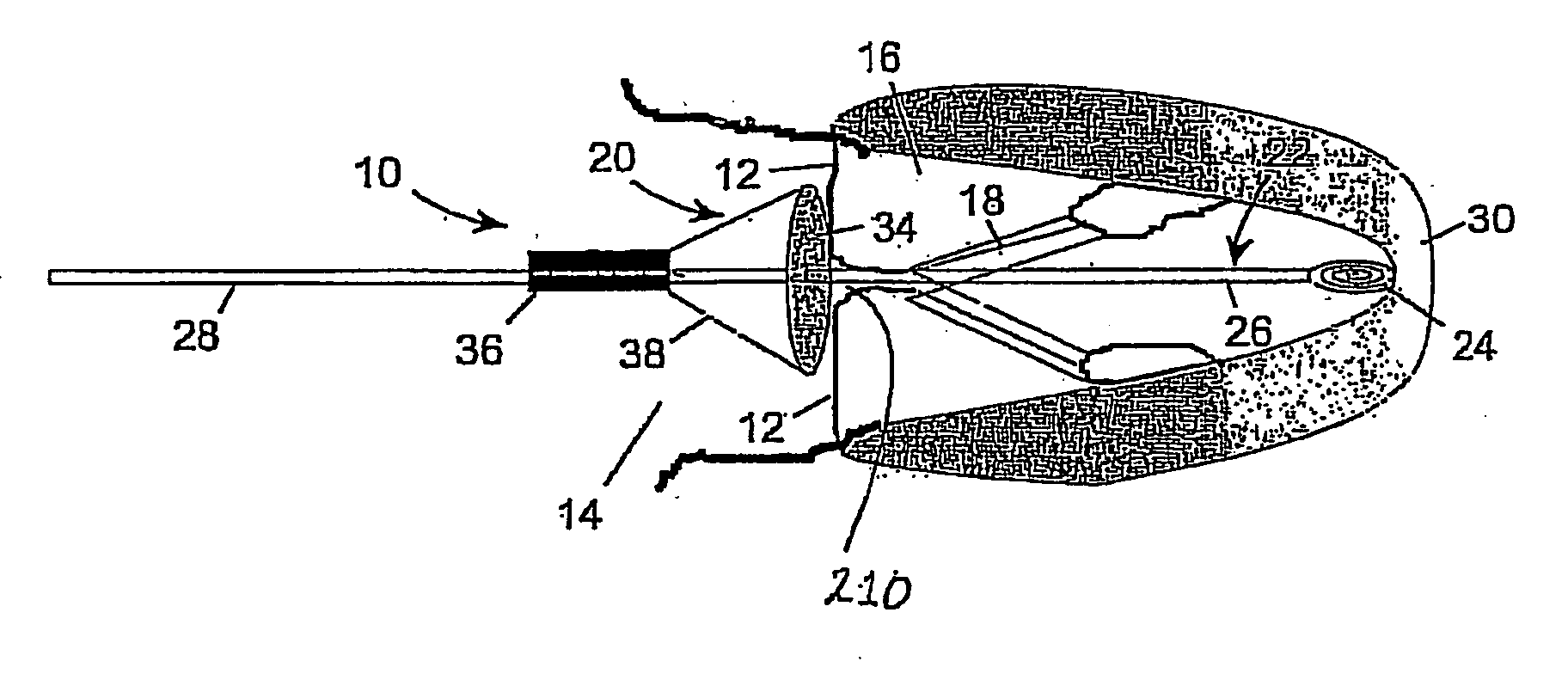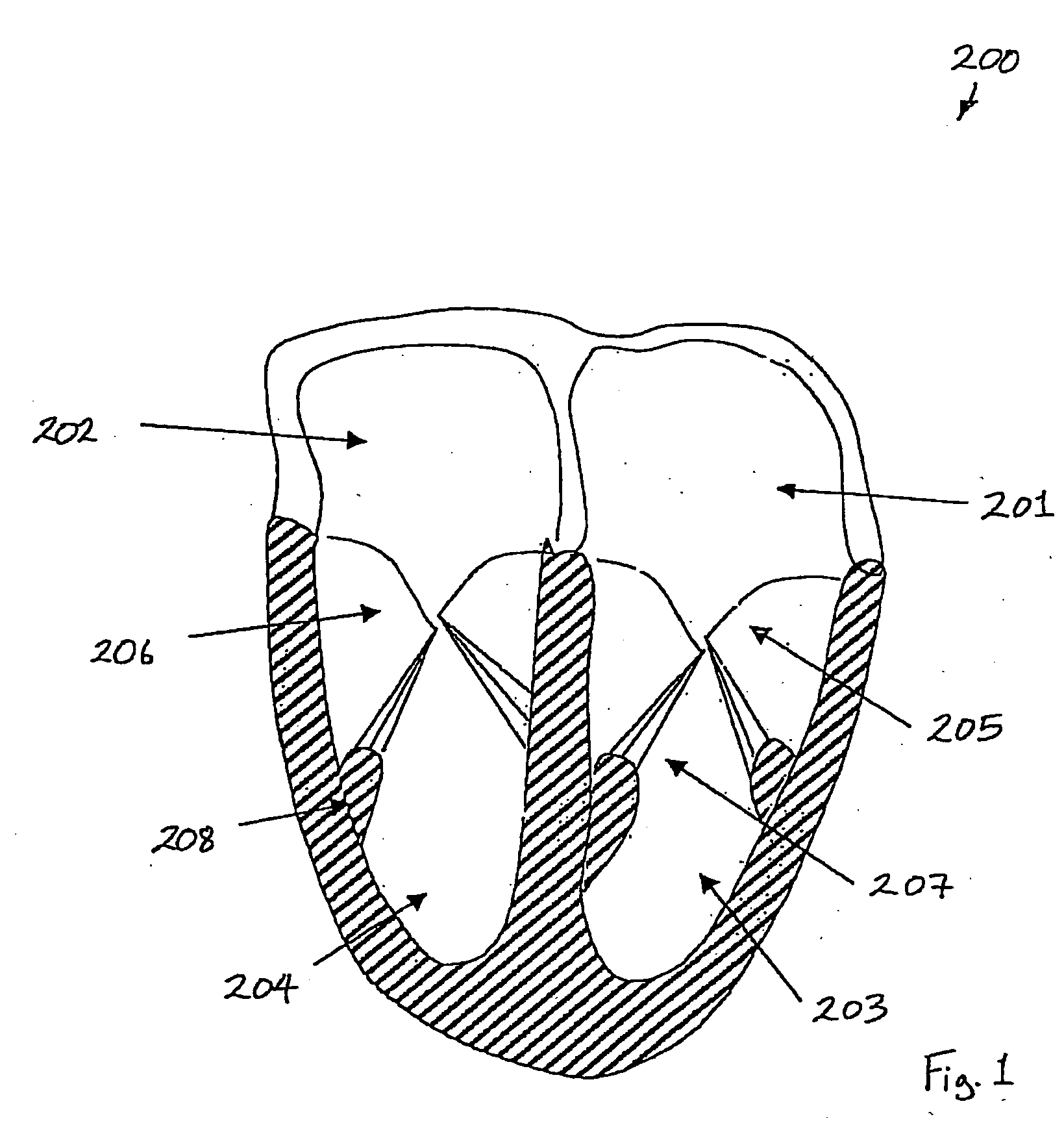Medical device suitable for use in treatment of a valve
- Summary
- Abstract
- Description
- Claims
- Application Information
AI Technical Summary
Benefits of technology
Problems solved by technology
Method used
Image
Examples
Embodiment Construction
[0190]FIG. 1 illustrates the anatomy of a heart 200. The heart 200 has a left atrium 201, a right atrium 202, a left ventricle 203 and a right ventricle 204. Also illustrated are the mitral valve 205, the tricuspid valve 206, the chordae tendiniae 207 and the papillary muscle 208.
[0191] Referring to FIGS. 2 to 9 there is illustrated a medical device 10 according to the invention. The device 10 is suitable for use in treatment of a valve. The device 10 is particularly suitable for treating the mitral valve 205 to prevent retrograde blood flow through the mitral valve 205.
[0192] Referring to FIGS. 2 to 9, there is illustrated the medical device 10 which acts as a repair device, for treating leaking of the heart valve leaflets 12, in particular the atrioventricular valve leaflets 12, in order to substantially reduce or eliminate regurgitation of blood through the valve leaflets 12. Although throughout the following description explicit reference is made to the valve leaflets 12 locat...
PUM
 Login to View More
Login to View More Abstract
Description
Claims
Application Information
 Login to View More
Login to View More - R&D
- Intellectual Property
- Life Sciences
- Materials
- Tech Scout
- Unparalleled Data Quality
- Higher Quality Content
- 60% Fewer Hallucinations
Browse by: Latest US Patents, China's latest patents, Technical Efficacy Thesaurus, Application Domain, Technology Topic, Popular Technical Reports.
© 2025 PatSnap. All rights reserved.Legal|Privacy policy|Modern Slavery Act Transparency Statement|Sitemap|About US| Contact US: help@patsnap.com



